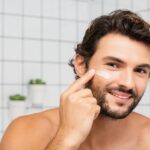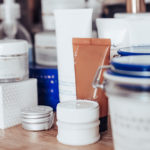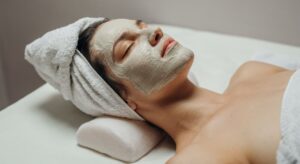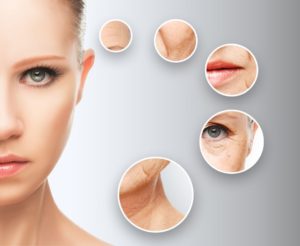Depending on the season, and state of your skin, your skin care regime probably tends to vary slightly. For example, as we move into spring, you might be exfoliating more to get rid of dry winter skin, and using lighter moisture-building bases (ie. oils & serums) that aren’t as heavy as what you would use in the winter months. Regardless of the season, here are 5 simple skin care steps to follow for glowing skin.
Firstly, it’s not just about the products you are using, but the order you apply them. By ensuring to apply your skin care products in the most effective order, you’re ensuring they’re working in unison and that you’re not wasting your money.
STEP 1: CLEANSER
Before you get started with any heavy cleansing creams it’s important to remember to remove your makeup and prep your face before slathering on your products. For ingredients to absorb properly you need clean skin that’s totally free of oil and dirt.
When removing your makeup skip the makeup wipes (they can leave behind residue that could lead to a breakout) and instead opt for a cleansing oil which dissolves all your makeup without stripping your skin of its oil. Afterwards you can follow it up with a gentle, creamy cleanser, which is especially good to use if you have a acne-prone skin type.
STEP 2: HYDROSOL (TONER)
Following cleansing, a good Toner (Hydrosol) can help to add a water barrier to your skin and act as a good foundation for all the steps that come next. Toners essentially just prime your face for ingredients to be better absorbed. Reminder: Toner (like most of the steps on this list) is totally optional.
When trying to decide which Toner to buy, look for one with either BHA (beta hydroxy acid, like salicylic acid) or AHA (alpha hydroxy acid, like glycolic acid or lactic acid). Which all work to unclog pores, prevent breakouts, and dissolve blackheads. The basic rule of thumb is if you’ve got dry skin, try AHAs, and if you’ve got oily skin, stick with BHAs.
When applying it, tap it over clean, dry skin every other night or morning. Make sure to wait until it dries before applying anything else or you can accidentally neutralize the acids before the toner has a chance to work its magic.
STEP 3: SERUMS AND ACTIVES
Now that you have prepped your skin, it’s time for the heavy lifters of your skin care routine, serums and actives.
Serums are essentially just shots of extremely concentrated nutrients, hydrators, and antioxidants that ramp up your skin health as soon as you apply them. A serum is applied first, so that it seeps into the skin. After of which you apply your actives and let them sit for a few minutes. Vitamin C serum, which protects your skin from the inflammation and damage caused by free radicals during the day can also brighten your skin and lighten dark spots on your face over time.
Products that contain ie. salicylic acid are intended to achieve a certain effect on your skin and are considered “actives.” They tend to be the “brightening” products or “correctors.” These products, plus serums, work on certain issues, concerns, and have a range of benefits for your skin.
STEP 4: MOISTURIZER
If you’re using acne treatments or anti-aging products at night, these products can be drying and irritating to your skin, so you’ll want to restore your skin with as much moisture as possible first thing in the morning. A moisturizer not only infuses your skin with hydration but also helps trap in all the products you applied in the previous steps to make the ingredients even more effective.
When choosing a moisturizer, look for a light, gentle hyaluronic-based cream which will keep skin hydrated without feeling too heavy or greasy. If possible, try to get a formula with a little sunscreen in it, at least SPF 30, especially if you’re not planning to add a separate sunscreen later. Whichever moisturizer you choose, make sure to let it sink in for at least a full five minutes before applying your makeup.
STEP 5: SUNSCREEN
You should always apply sunscreen last, why? Sunscreen isn’t trying to penetrate anything—it’s just there to cover your skin and act as a layer against the outside world, protecting your skin from the damaging effects from the sun. Before you tell yourself that the SPF 15 in your foundation or moisturizer is good enough, keep in mind that many of the worlds best dermatologists recommend that the absolute bare minimum SPF you need on your face is SPF 30.
THE BOTTOM LINE
While skin care routines and products vary from person to person, season to season, and other factors, we want to reiterate the importance of the order you use them. This can mean the difference between an effective routine and throwing money down the drain.
HAVE QUESTIONS? GET IN TOUCH WITH US
We proudly serve communities in Suffolk County and beyond including Islip, Manhattan, Commack, Queens, Brooklyn, Rockville Centre, Babylon Village, Huntington Bay, West Hampton, and East Setauket.
We would love to sit down with you for a consultation, at which time we can recommend the best approach for your specific needs.
*Information in this article is not medical advice and may not be factually accurate. It is intended for entertainment purposes only. Consult with a physician before attempting any tips in this blog post and to get the most up to date factual data about any procedure or treatment.














